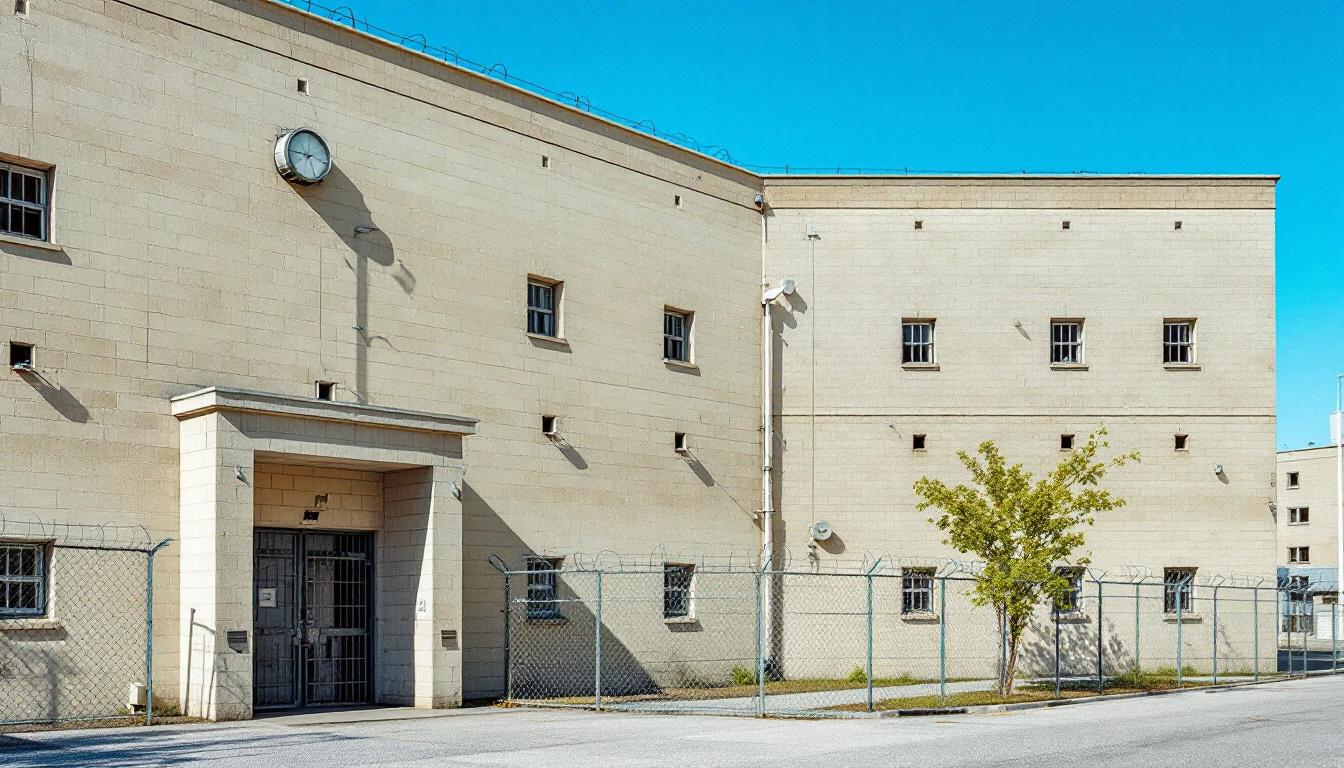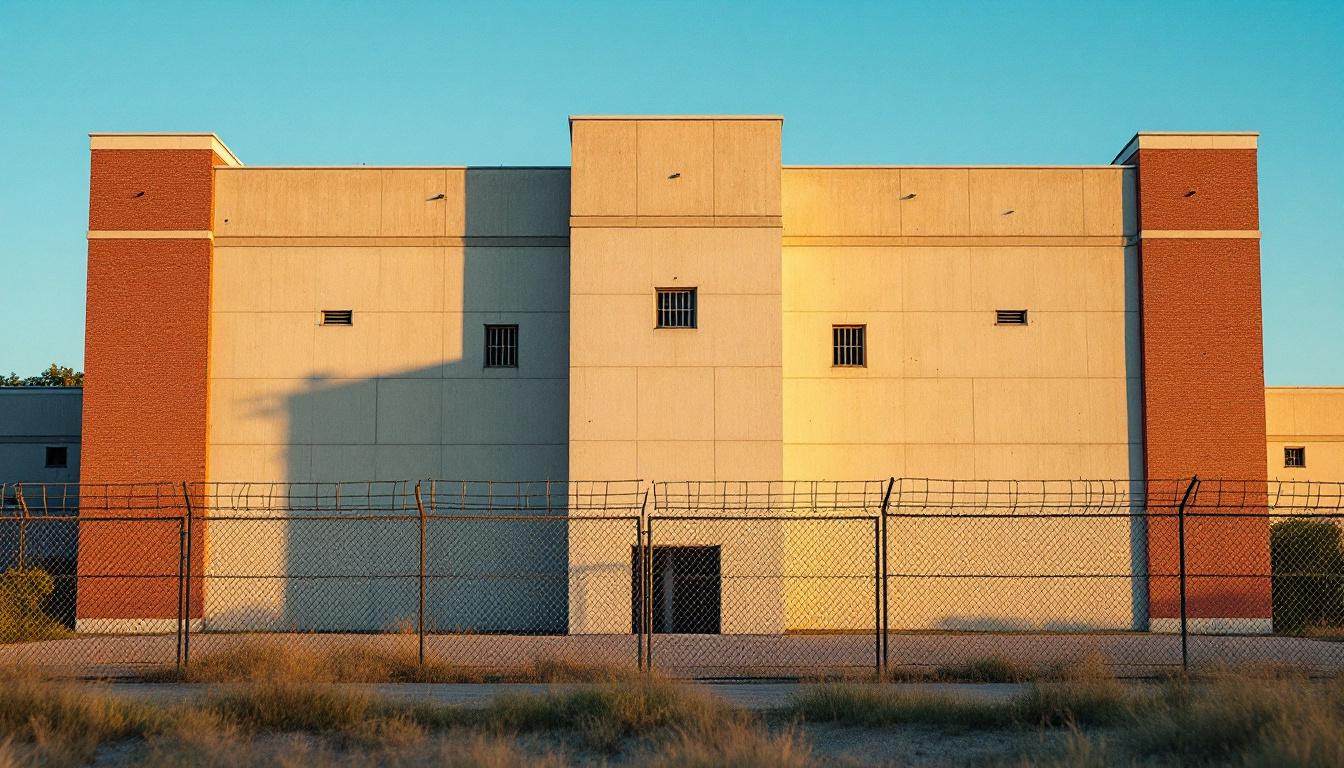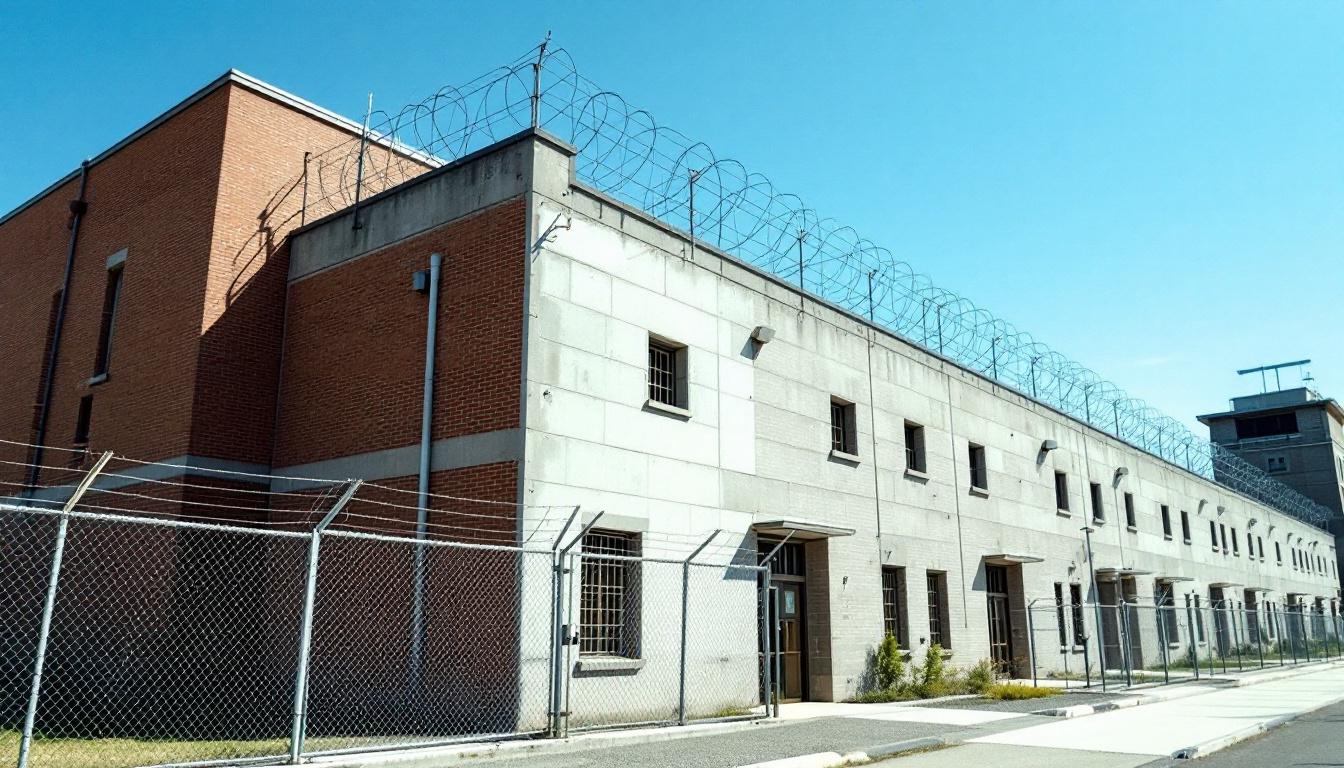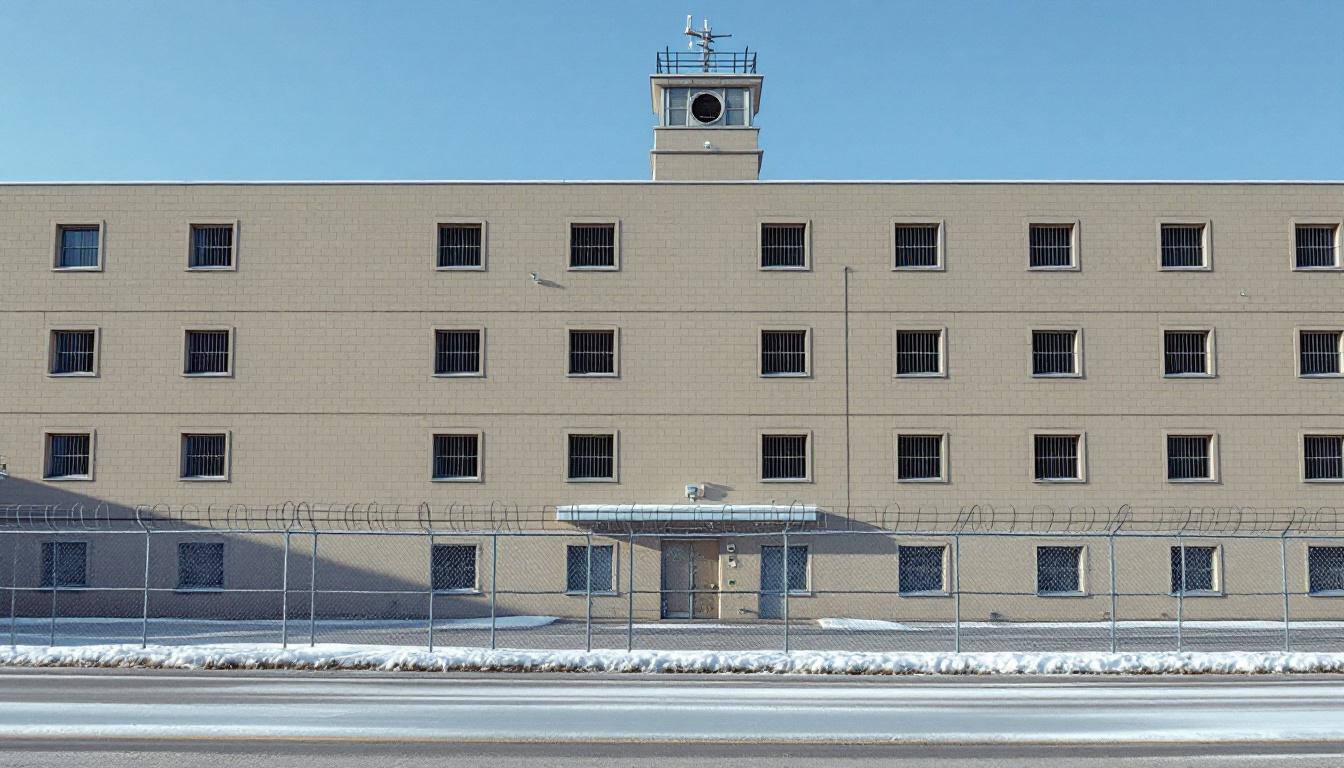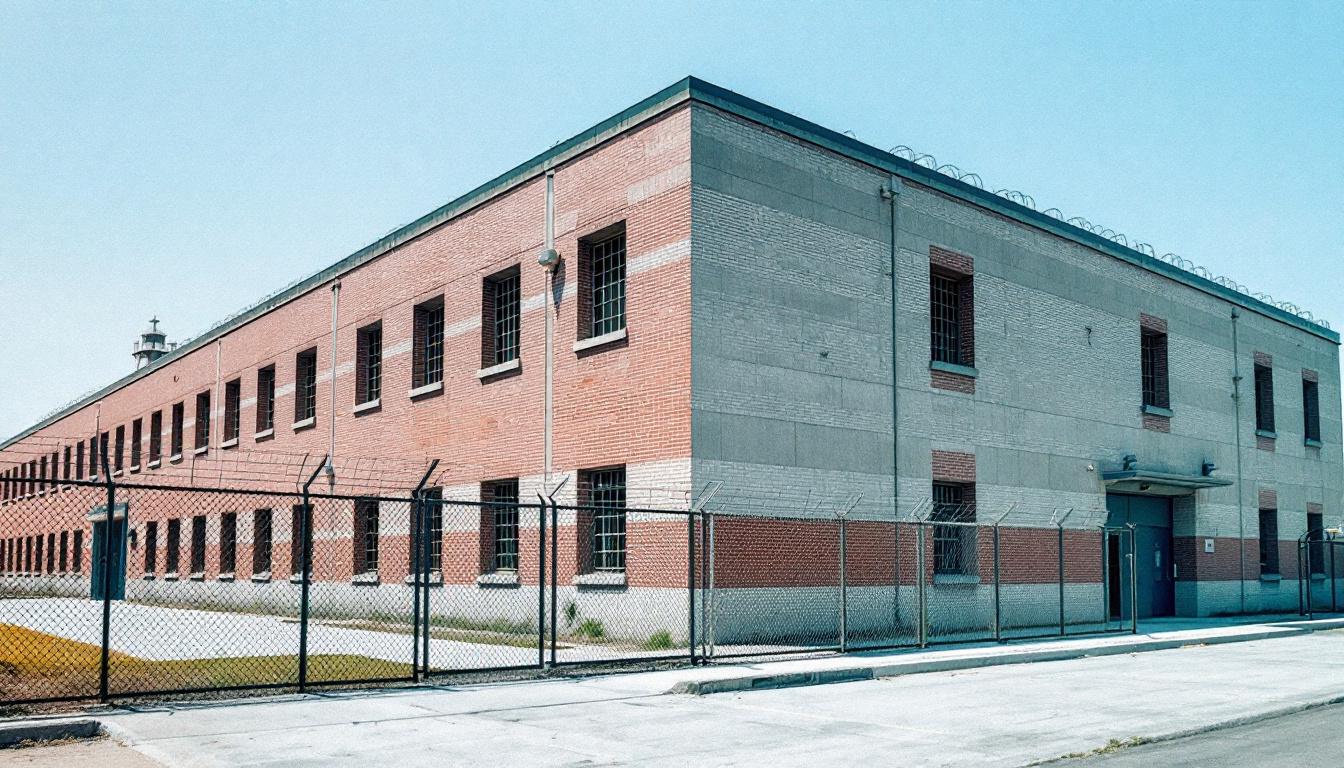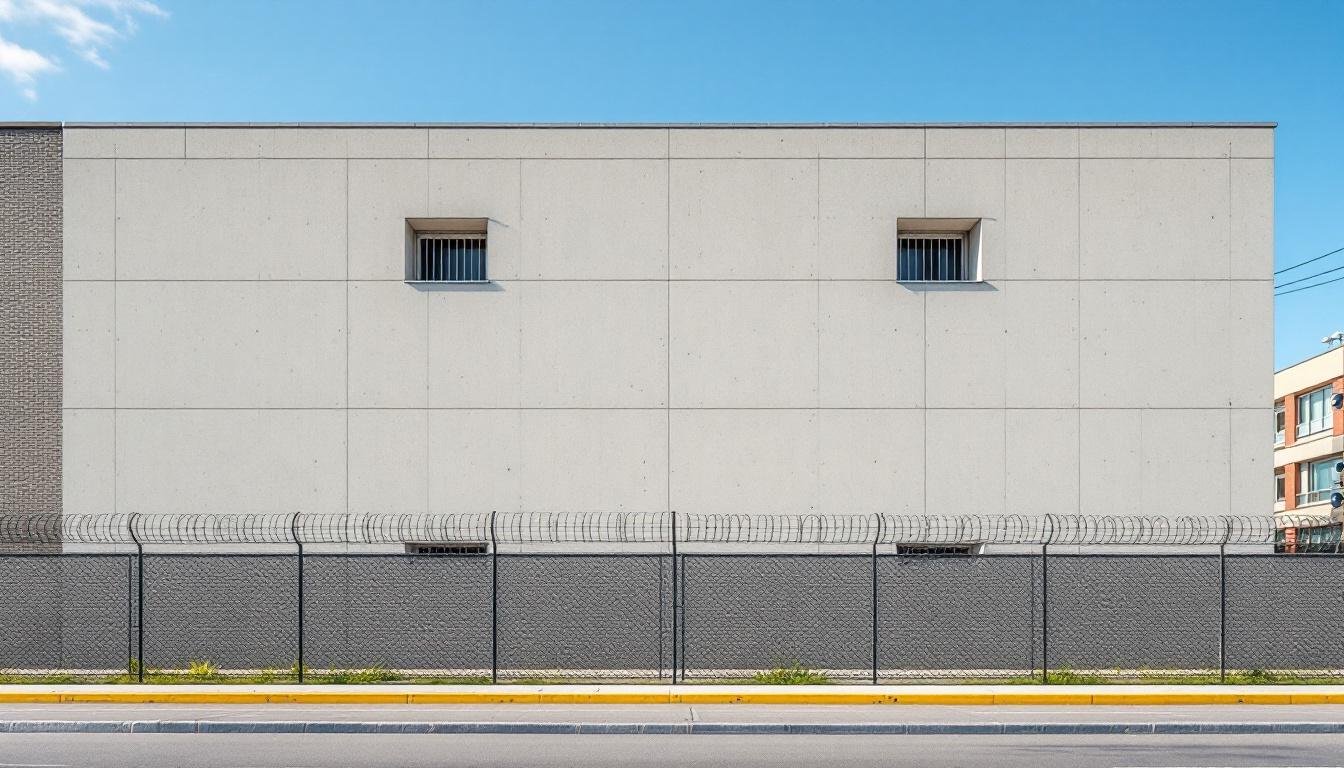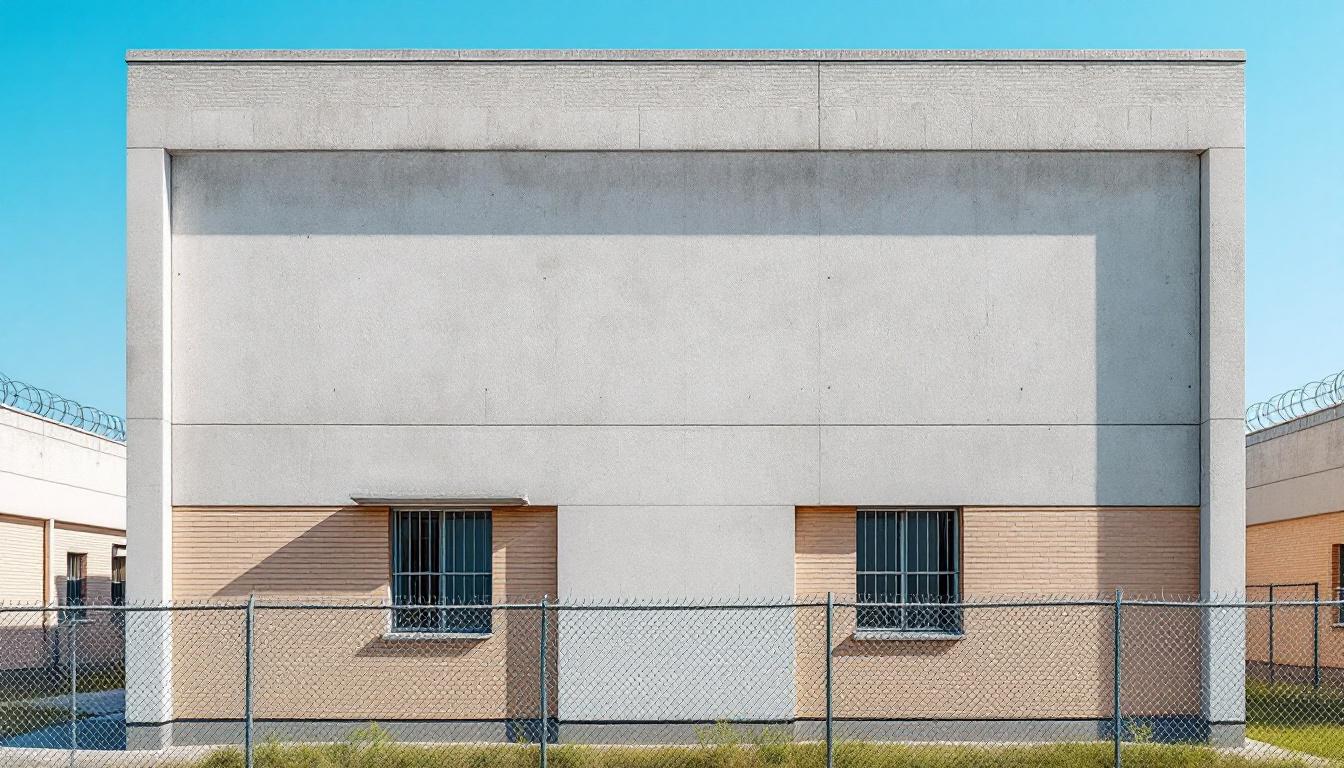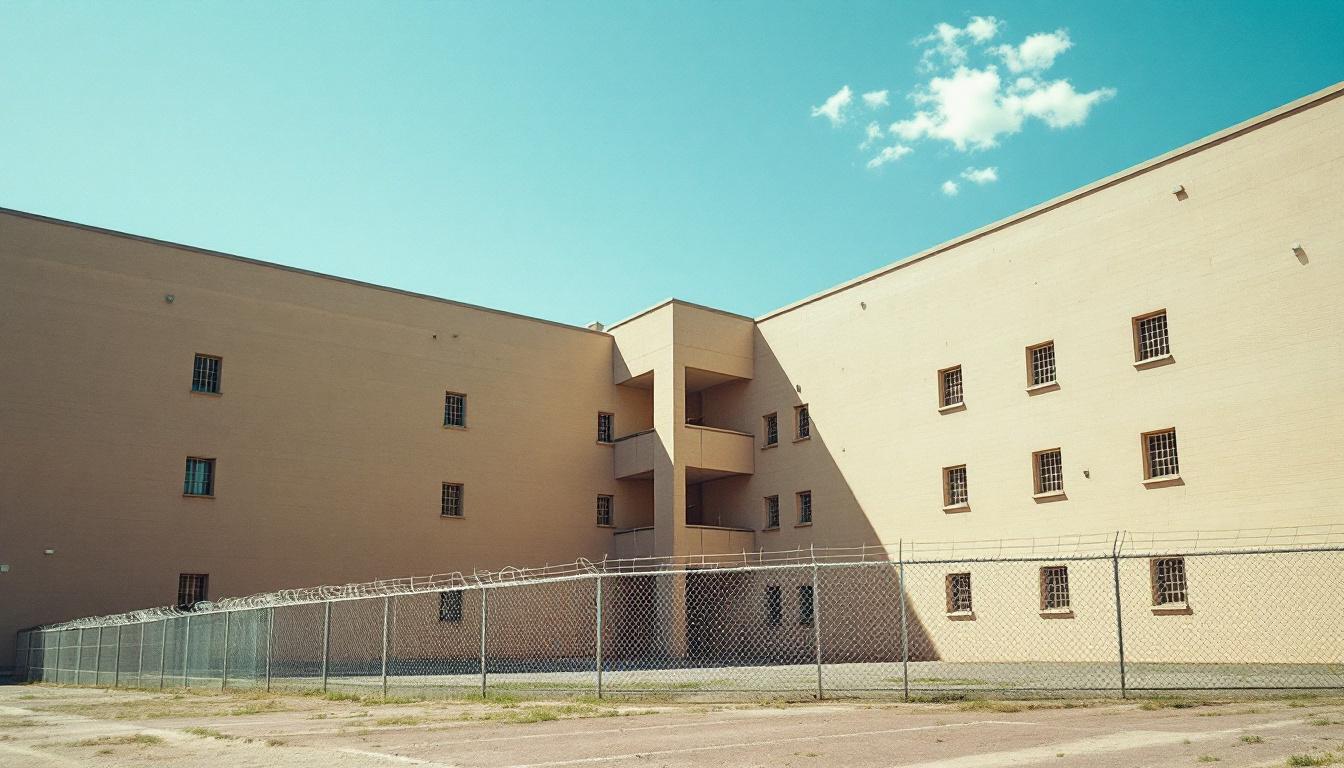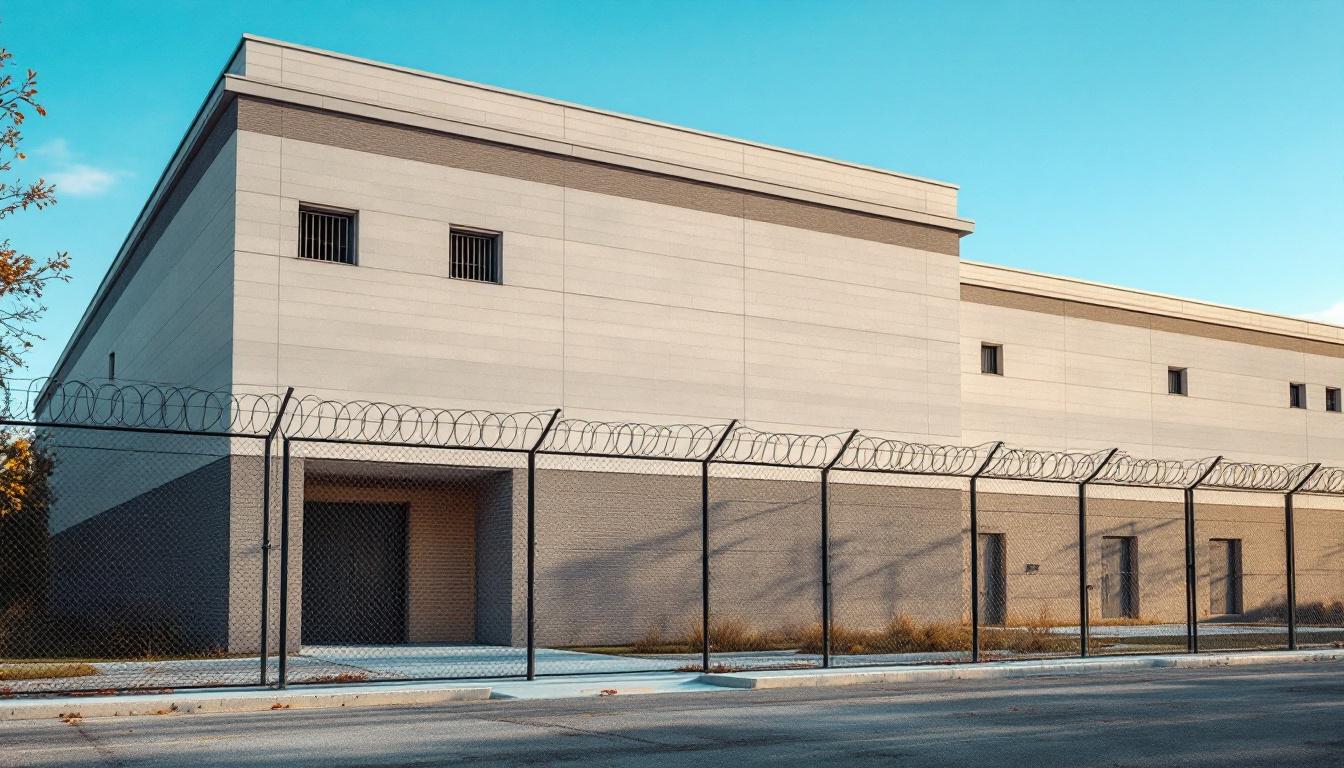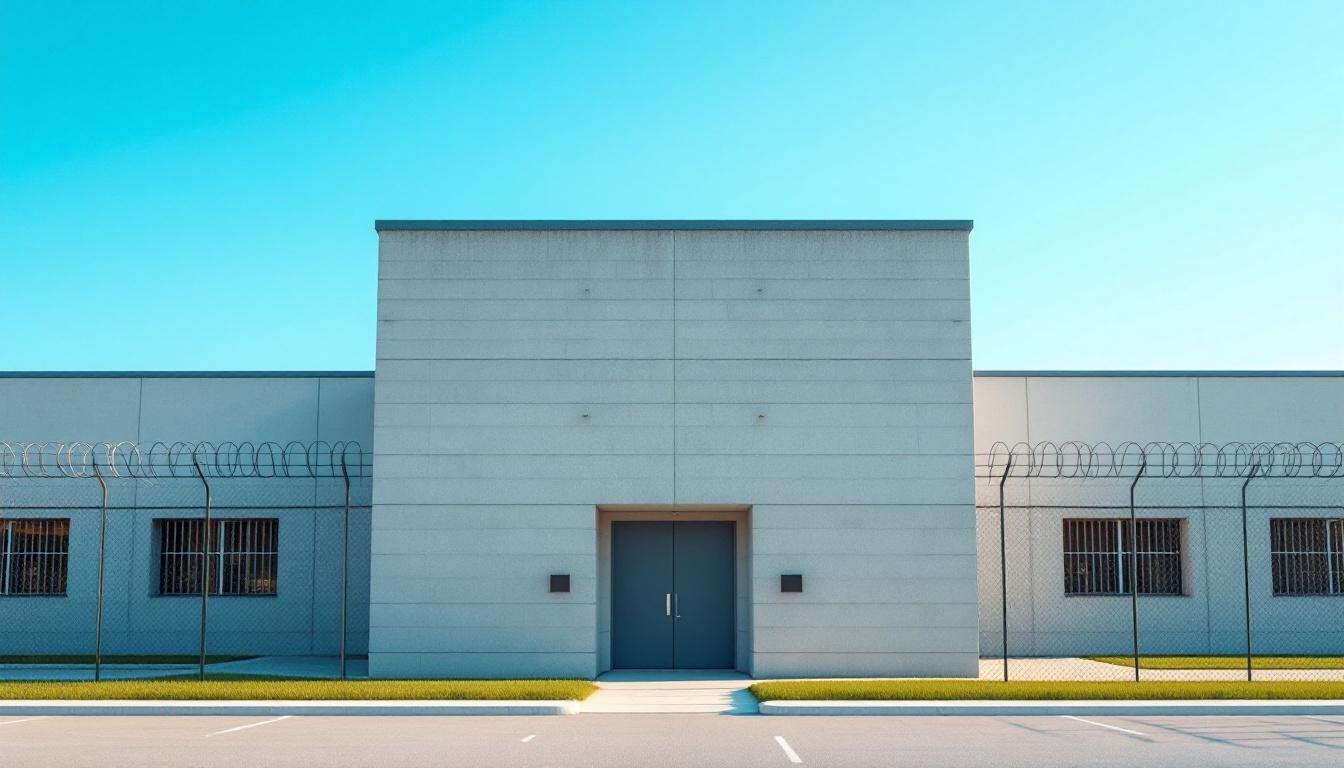
Quick Navigation
How to contact an inmate at Big Sandy Regional Detention Center
This comprehensive guide will walk you through how to connect with an inmate at Big Sandy Regional Detention Center. Follow the steps below to find an inmate and send letters and photos:
- Search for the inmate using our search tool below
- Create your account or log in to Penmate
- Write your message (up to 6,000 characters)
- Send instantly - inmates receive printed copies daily
Find an Inmate
Search for an inmate to start communicating today
Tip: You can search by first name, last name, or inmate ID number
To contact a person at Big Sandy Regional Detention Center start by searching for the person on the official facility website. Perform a search by following these steps:
- Step 1: Enter their first name and last name into the search form and click "Search"
- Step 2: Locate their inmate record
- Step 3: Write down their Inmate ID and any housing information provided
Important! Be sure to enter the person's full name. Nicknames should not be used.
How to Send Messages to Inmates

You can use your phone or computer to send emails, letters, and photos to an inmate. Messages are sent electronically to inmate tablets or kiosks at the facility. If you would like to send a message, start by searching for an inmate at Big Sandy Regional Detention Center.
Sending Photos and Postcards

A great way to send love and support to a loved one at Big Sandy Regional Detention Center is to send photos and postcards. It only takes a few minutes to send photos from your phone and it makes a huge difference. You can also mail postcards with words of support and inspiration, or design your own postcard for special moments like birthdays and holidays.
Important! Be sure not to send any explicit photos or they may not be approved by the facility. You can also use a photo printing app like Penmate to make sure your photos are printed at the correct size (4x6 or 3x5) and are mailed according to the rules and regulations of Big Sandy Regional Detention Center.
Frequently asked questions about Big Sandy Regional Detention Center
-
How long does it take to deliver a message?
If you're sending an email message your letter is usually delivered within 24-48 hours. For messages sent via mail you should expect delivery within 3-7 days. All messages will need be approved by Big Sandy Regional Detention Center.
-
How much does it cost to send a message to Big Sandy Regional Detention Center?
You can send a message free using your phone or mail a message via USPS for the price of a $0.60 stamp and envelope. You can also purchase credits or e-stamps from services starting at $1.99.
-
What services can I use to contact an inmate at Big Sandy Regional Detention Center?
Penmate
You can use Penmate to send letters and photos to an inmate from your phone. It's an easy way to stay in touch during your loved one's incarceration. Use the inmate locator to find an inmate's location and contact information, then you can send messages within a few minutes.
Securus messaging
Securus may be another option for communicating with an inmate at Big Sandy Regional Detention Center. You can create a friends and family account and purchase credits to send messages. All messages will be reviewed and must be approved by the facility.
JPay
Some county jails and state prisons may support sending messages with JPay. You must register an account with the system, find your loved one, and purchase stamps to send messages. For some locations you can also attach photos.
Smart Jail Mail
You may also check if Smart Jail Mail is available at Big Sandy Regional Detention Center. Smart Jail Mail is operated by Smart Communications and has contracted with some state and county jails. After purchasing credits, your messages and photos are sent to the facility, printed out, and then handed out to your loved one.
-
What is the mailing address of Big Sandy Regional Detention Center?
Mailing address:
Big Sandy Regional Detention Center
904 3rd St
Paintsville, KY 41240
Phone: (606) 297-5124 -
What are the visiting hours at Big Sandy Regional Detention Center?
Visiting hours at Big Sandy Regional Detention Center vary by housing unit and security level. Generally, visits are scheduled on weekends and holidays, with some facilities offering weekday visits. Contact the facility directly at (606) 297-5124 or check their website for the current visiting schedule. Visits typically last 30-60 minutes and must be scheduled in advance.
-
What items are prohibited when sending mail to Big Sandy Regional Detention Center?
Prohibited items typically include: cash, personal checks, stamps, stickers, glitter, glue, tape, staples, paperclips, polaroid photos, musical or blank greeting cards, hardcover books, magazines with staples, and any items containing metal or electronics. Only send letters on plain white paper with blue or black ink. Photos must be printed on regular photo paper (no Polaroids). Always check with Big Sandy Regional Detention Center for their specific mail policies.
-
How do I send money to an inmate at Big Sandy Regional Detention Center?
You can send money to an inmate at Big Sandy Regional Detention Center through several methods: 1) Online using JPay, Access Corrections, or the facility's approved vendor, 2) Money orders mailed directly to the facility with the inmate's name and ID number, 3) Kiosks located in the facility lobby, or 4) Over the phone using a credit or debit card. Fees vary by method, typically ranging from $2.95 to $11.95 per transaction.
-
Can I schedule a video visit with an inmate at Big Sandy Regional Detention Center?
Many facilities now offer video visitation as an alternative to in-person visits. At Big Sandy Regional Detention Center, video visits may be available through services like Penmate, Securus Video Connect, GTL, or ICSolutions. Video visits typically cost $10-20 for 20-30 minutes and must be scheduled in advance. You'll need a computer or smartphone with a camera and reliable internet connection. Contact the facility for their specific video visitation policies and approved vendors.
-
What identification do I need to visit an inmate at Big Sandy Regional Detention Center?
All visitors must present valid government-issued photo identification such as a driver's license, state ID, passport, or military ID. Minors must be accompanied by a parent or legal guardian who can provide the minor's birth certificate. Some facilities require visitors to be on the inmate's approved visitation list, which may require a background check. Contact Big Sandy Regional Detention Center for specific ID requirements and visitor approval procedures.
-
How can I find out an inmate's release date?
To find an inmate's release date at Big Sandy Regional Detention Center, you can: 1) Use the online inmate search tool if available, 2) Call the facility's records department, 3) Contact the inmate's case manager or counselor, or 4) Have the inmate provide this information during a call or visit. For privacy reasons, some facilities only release this information to immediate family members.
Facility Overview
Contact Information
Big Sandy Regional Detention Center904 3rd St
Paintsville, KY 41240
Phone: (606) 297-5124
Official Website

About Big Sandy Regional Detention Center
Community safety and successful reintegration intersect at Big Sandy Regional Detention Center, KY, where the facility’s mission extends beyond secure housing to encompass meaningful preparation for inmates’ eventual return to Eastern Kentucky communities. Located in Paintville, this KY correctional facility operates as an integral component of the state’s broader correctional framework, emphasizing evidence-based approaches that typically address both immediate security needs and longer-term rehabilitation objectives. The center’s positioning within the Appalachian region allows staff to understand the comprehensive challenges and opportunities that characterize reentry in rural Kentucky communities.
The facility’s programming approach generally focuses on addressing the underlying factors that may contribute to recidivism, with inmates services that often include educational opportunities, substance abuse counseling, and vocational skill development aligned with regional employment markets. Mental health support and case management services typically form core components of the detention center’s reintegration strategy, recognizing that successful community transitions require comprehensive preparation. Through collaboration with state agencies and community organizations, Big Sandy Regional Detention Center works to ensure that programming efforts support Kentucky’s statewide goals of reducing recidivism while maintaining public safety standards that serve both inmates and the broader Paintsville area effectively.
Programs & Services
Personal transformation through structured intervention forms the cornerstone of rehabilitation efforts at Big Sandy Regional Detention Center, where comprehensive services address the multifaceted challenges that inmates face during incarceration. The facility’s approach recognizes that meaningful change requires addressing educational deficits, vocational limitations, and underlying behavioral patterns that may have contributed to criminal involvement. Through carefully designed programming, inmates typically engage in evidence-based interventions that foster critical thinking, emotional regulation, and practical skill development essential for successful community reintegration.
Educational services often encompass basic literacy instruction, GED preparation, and computer literacy training, providing inmates with foundational academic skills necessary for employment and continued learning. Vocational programs may offer hands-on training in various trades and technical fields, allowing participants to develop marketable skills while gaining confidence in their ability to secure legitimate employment upon release. Furthermore, these educational and vocational opportunities frequently incorporate mentorship components, where inmates receive guidance from qualified instructors who emphasize both technical competency and professional development.
The facility’s therapeutic services typically include substance abuse treatment programs that address addiction through counseling, group therapy, and relapse prevention strategies. Mental health counseling services may provide individual and group sessions designed to help inmates process trauma, develop coping mechanisms, and improve interpersonal relationships. Additionally, support services such as creative writing workshops often serve as outlets for self-expression and emotional processing, while religious services may offer spiritual guidance and community connection. Victim awareness programs frequently complement these therapeutic interventions by helping inmates understand the impact of their actions and develop empathy, contributing to a more comprehensive rehabilitation experience that addresses both personal healing and social responsibility.
Daily Life & Visitation

The concrete corridors and secured housing units of Big Sandy Regional Detention Center create a structured environment where every aspect of daily life follows established protocols and security procedures. Within this controlled setting, inmates navigate a world where steel doors, monitored common areas, and designated movement times define their physical boundaries. The facility’s layout typically includes multiple housing units, each designed to accommodate inmates while maintaining necessary security measures and supervision levels.
Today’s routine consistently begins with early morning counts and meal service, followed by structured activities that may include work assignments, educational programming, or recreational periods. Inmates generally adapt to this predictable schedule by developing personal routines within the broader institutional framework, often finding ways to maintain connections with family through scheduled visitation periods and telephone privileges. Furthermore, the facility typically provides various work opportunities that may include kitchen duties, maintenance tasks, or cleaning assignments, allowing inmates to earn modest wages while contributing to daily operations.
Although the physical environment remains restrictive, inmates often find structure through programming schedules that may include educational classes, substance abuse counseling, or religious services. Recreation periods usually provide opportunities for physical exercise in designated areas, while commissary privileges allow inmates to purchase personal items and snacks to supplement their daily needs. The facility generally maintains policies that support family connections through regular visitation schedules and communication options, helping inmates preserve important relationships during their period of incarceration.
Ready to Connect?
Start communicating with your loved one today
Search for an Inmate
